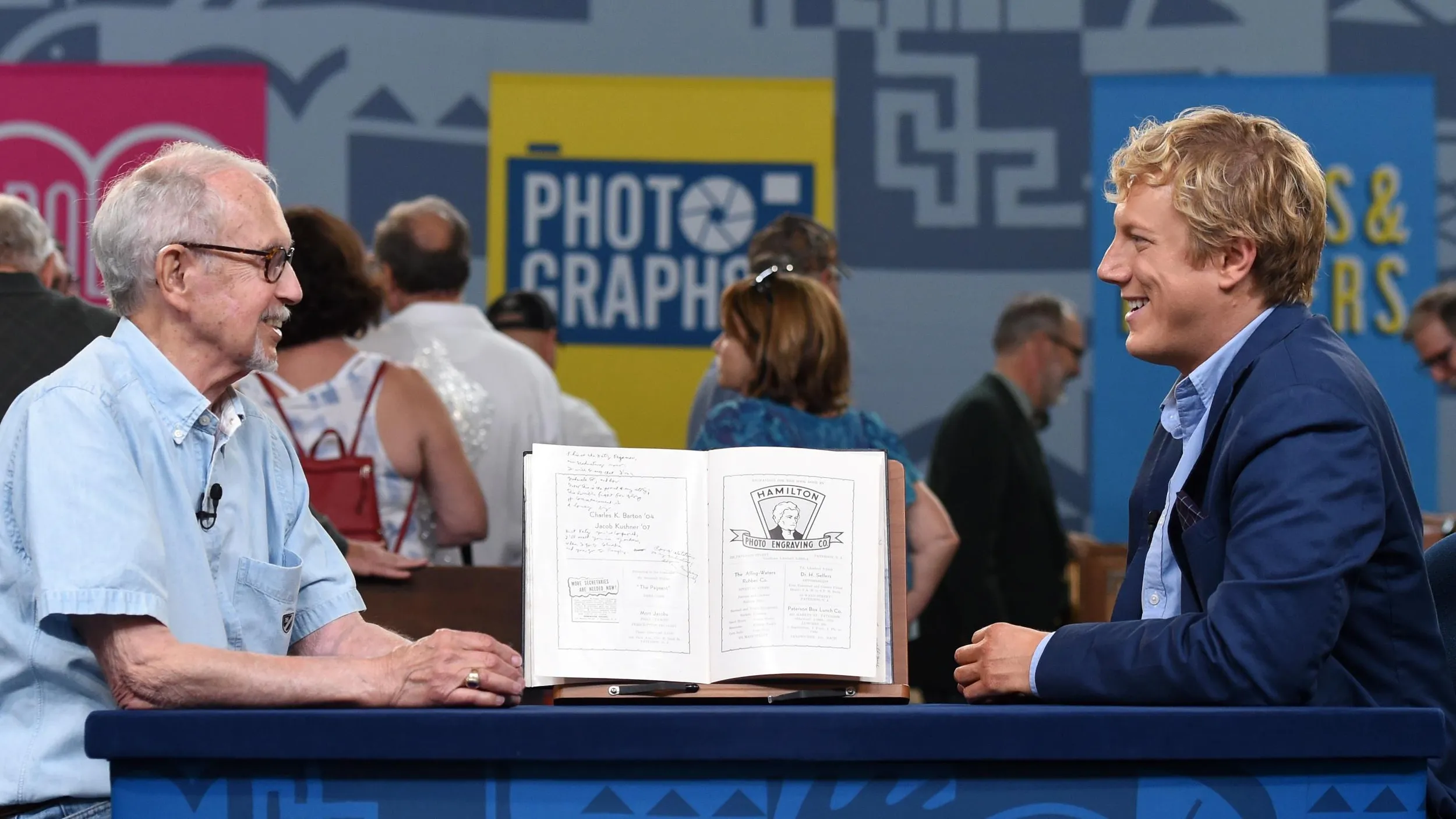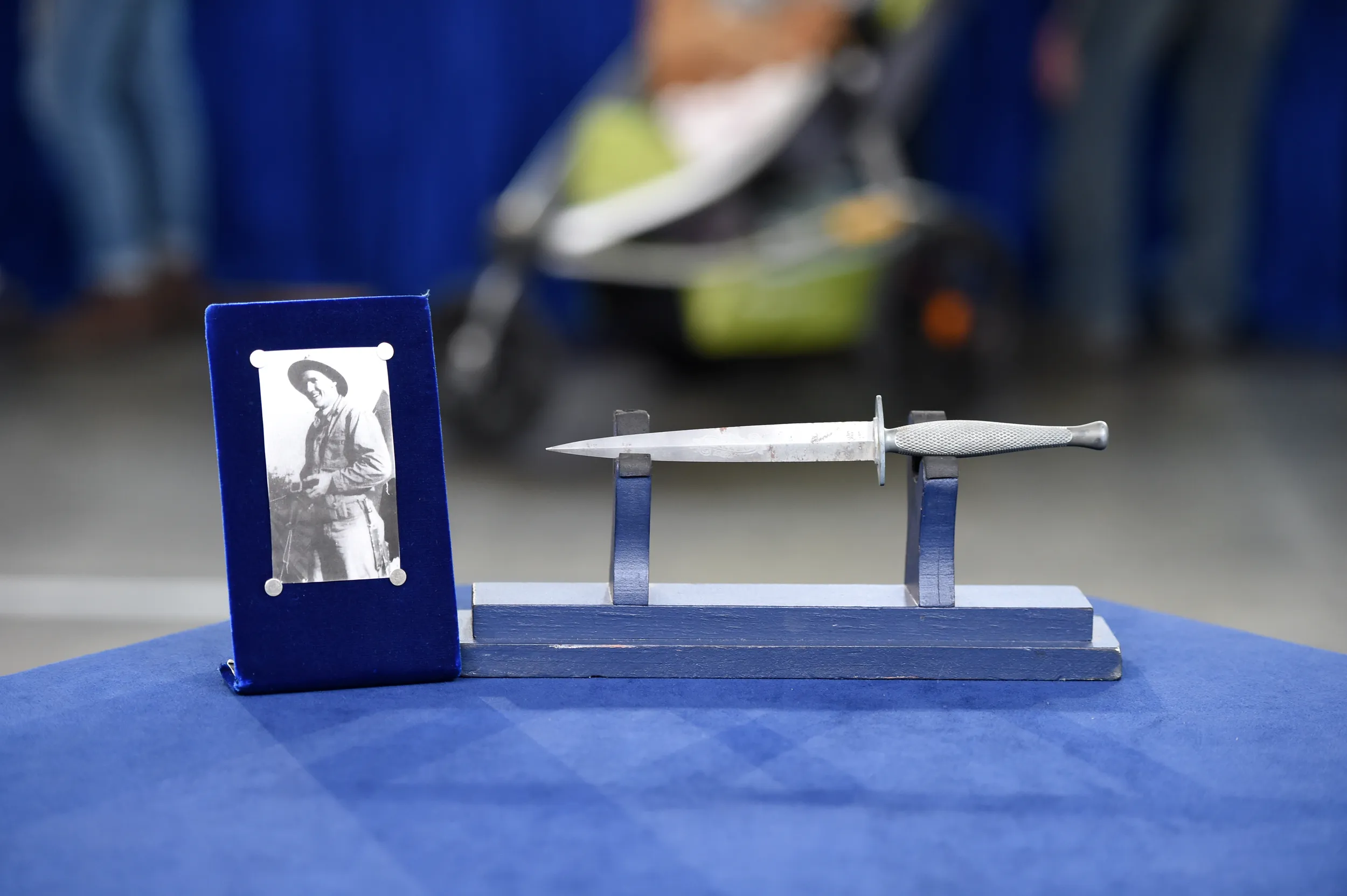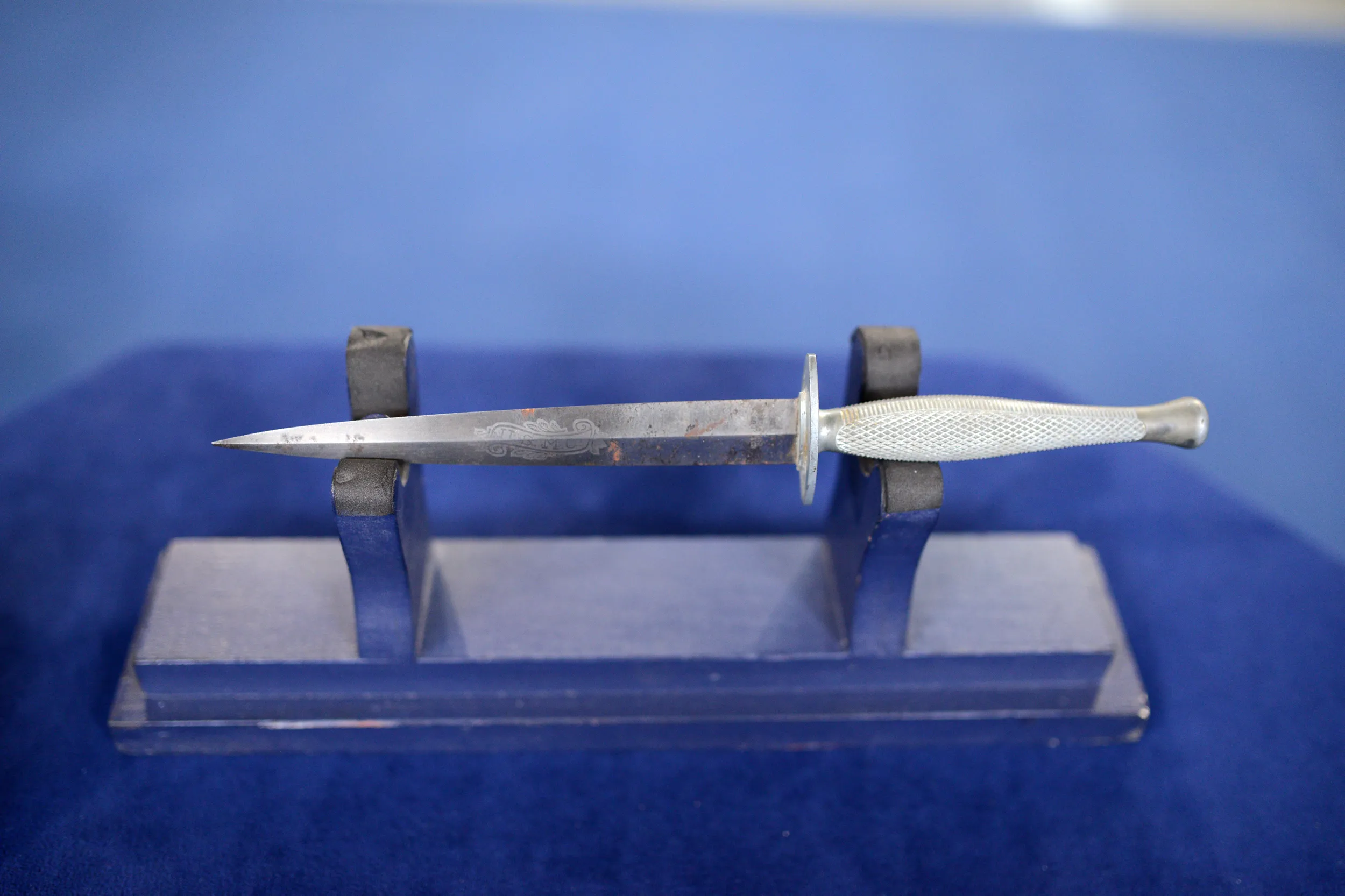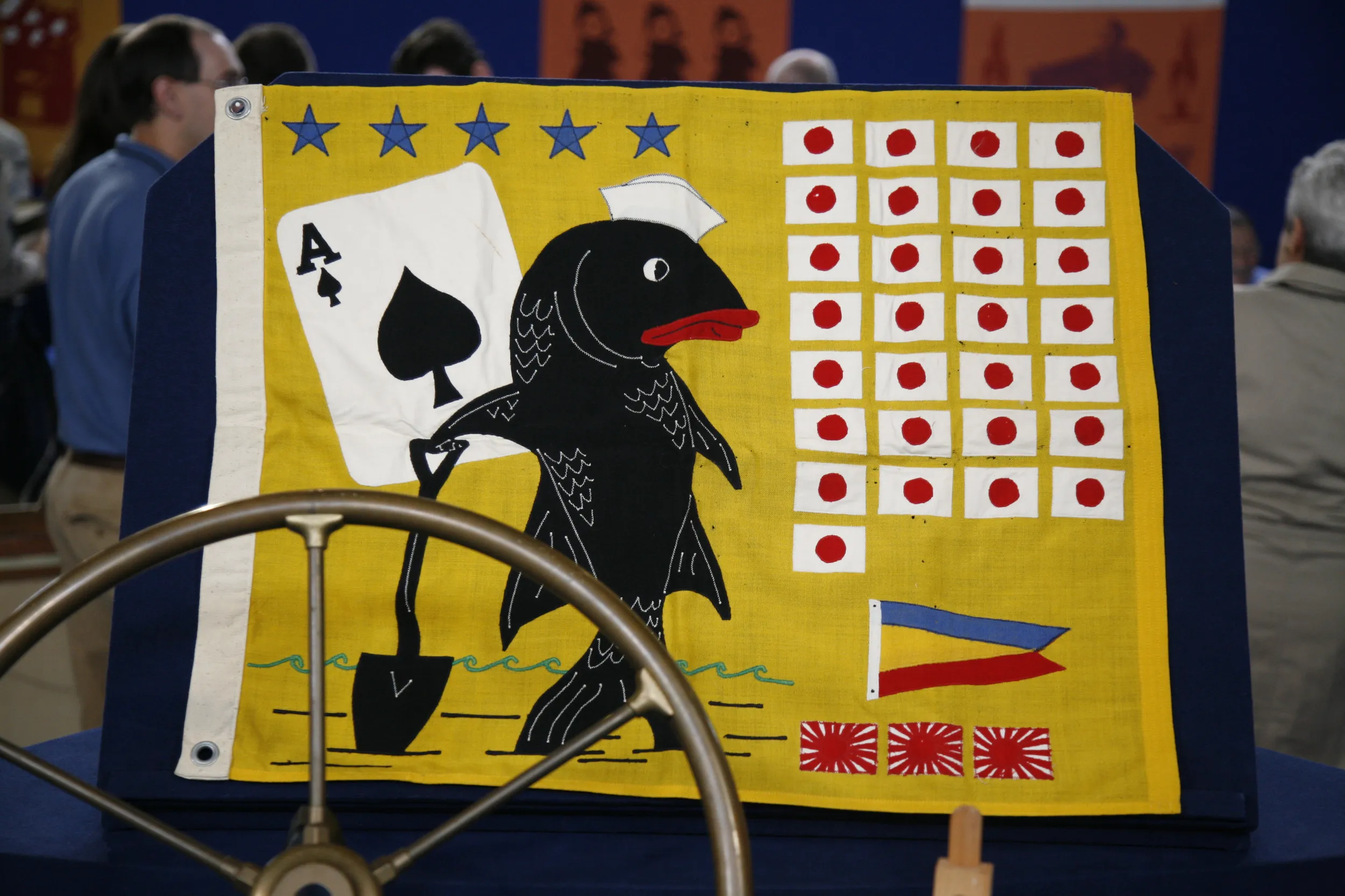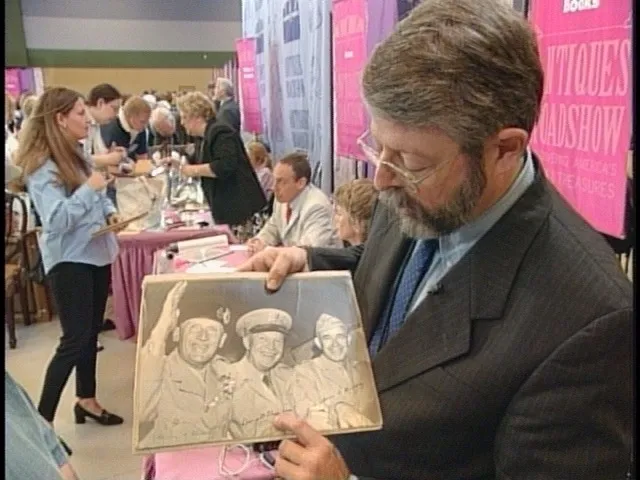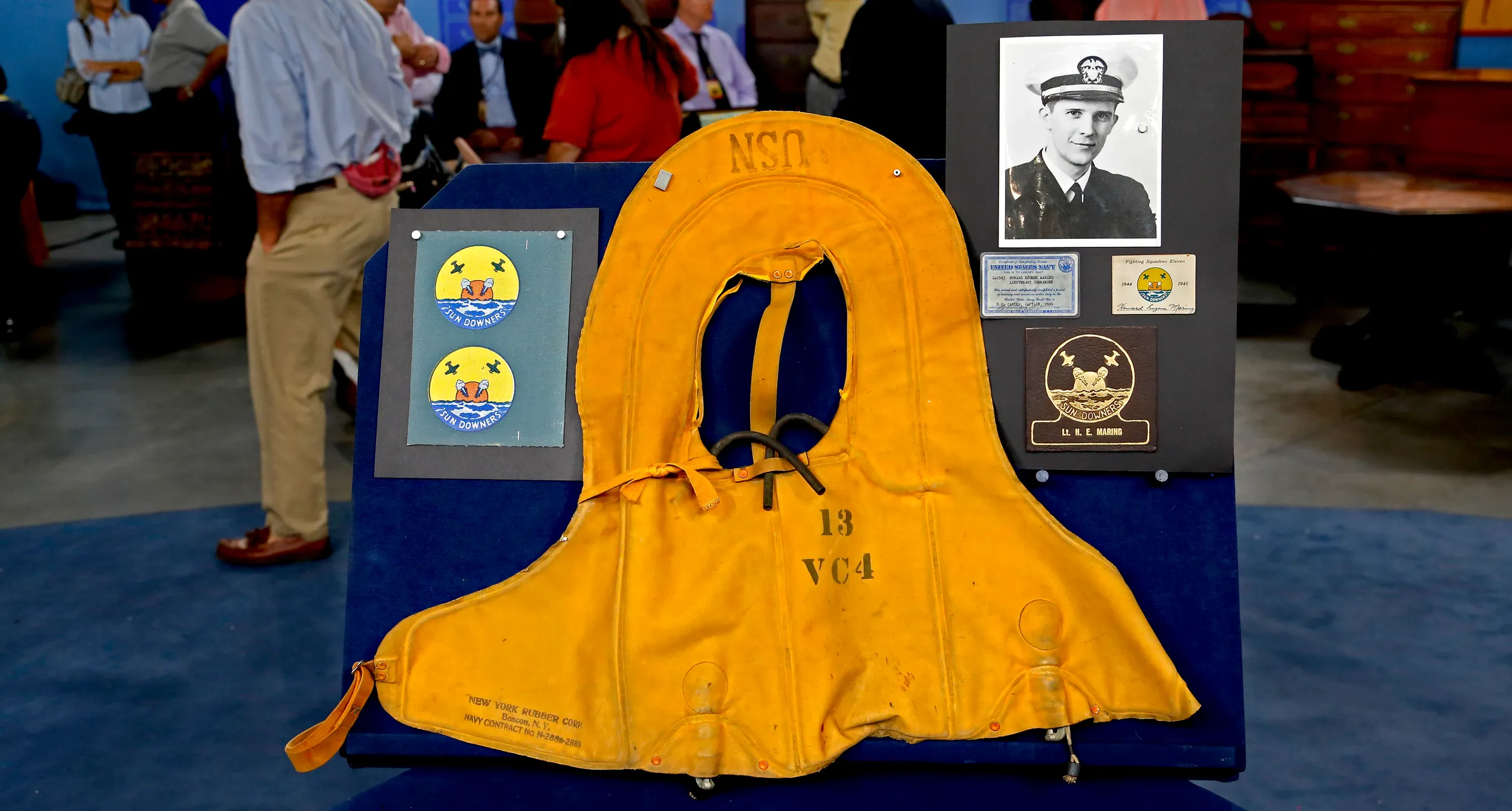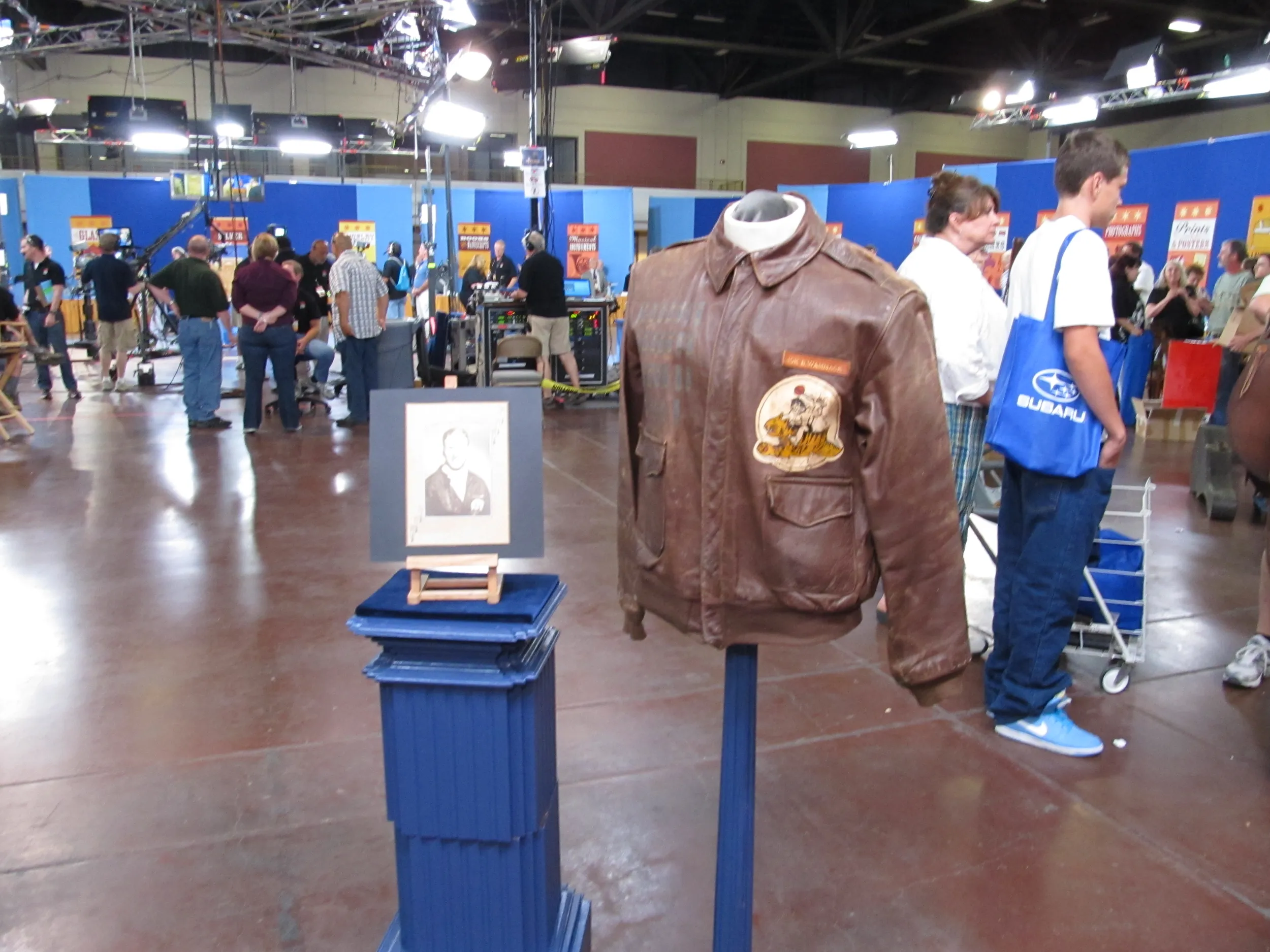GUEST: I have my grandfather's Marine Raider stiletto knife, and during World War II, he brought this to Vanguna, which I believe is, uh, the Solomon Islands. There was a sniper and he was shot through the hip and, uh, it was by a 37-millimeter anti-tank shell, and then his belt was taken off and so then that's how they lost the sheath.
APPRAISER: Sounds like losing the sheath was the…
GUEST: Was a good--
APPRAISER: …least of his concerns.
GUEST: Yes, yes, so, and he actually got a Silver Star from that point, because he was able to help one of his comrades out that was shot through the shoulder. I don't know if it was him that took out the sniper but somebody took out the sniper and he was able to save his comrades. He died in 2003, so luckily I was able to know him for most of my life.
APPRAISER: Did he talk about his service at all?
GUEST: He did. He was a little… hesitant sometimes to talk about it. I don't know if he was nervous or just memories, but… he was a really special man and it seemed like he had a lot of stories, so.
APPRAISER: Well, these knives are very special, too, and it's a wonderful souvenir from the Second World War and from an elite unit. The Marine Raiders were tough guys. They were supposed to go behind the lines and carry out special operations missions in the early part of World War II when we were really getting pushed back in the Pacific, and the Japanese juggernaut was rolling forward and people didn't think that they could be stopped and so they trained up these groups of fellas who were very specially trained to take the war to the enemy. A number of their leaders trained in Scotland with the British commandos, and that's where the genesis of this knife is. Actually, this was born in Scotland.
GUEST: Really?
APPRAISER: This was copied off of the British Sykes-Fairbairn fighting knife, but not done quite as well as the, uh, the British knife was.
GUEST: Oh, really?
APPRAISER: It has the same overall profile of a Sykes-Fairbairn. It's a commando fighting knife. It's meant for actions where you're going to sneak up behind somebody and use the knife to… to take out a sentry silently or that sort of thing. They got the idea right, but as far as the execution, they kind of lost a few things in translation, the first of those being that this handle is made out of a cast gray metal, zinc, it's fairly fragile and most of these that you see that have survived, the guards tend to be broken off. They tend to crumble, so finding one with a guard intact is a nice, pleasant surprise. The other thing that these have that collectors look for is the scroll with USMC in the center of the blade. A lot of times that has faded, which decreases the value. These were made by a company called Camillus and they made approximately 14,000 of them. They issued them out early on to the raiders and some of the guys liked them but a lot of guys just... "This is a piece of junk." They preferred to carry something a little more robust.
GUEST: And they were only made for the raiders?
APPRAISER: They were made for the raiders and some of them were also issued to the paramarines. We were also training marines to be paratroopers, and like the raiders, they got folded into other organizations. Because so few of them survive intact these days, a retail value for one of these would be between $2,000 and $2,500.
GUEST: Okay.
APPRAISER: Being a family piece, for insurance, I would put an insurance value of $3,000 on it.
GUEST: Okay.

